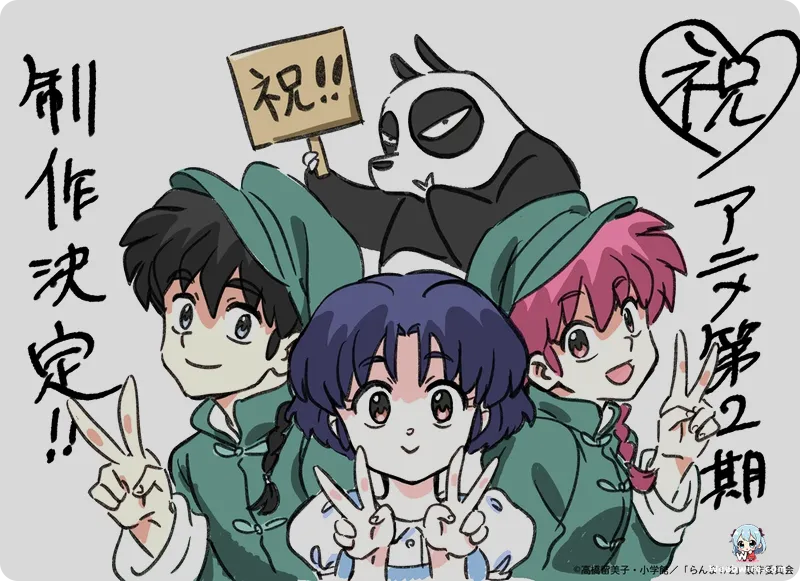Beyond the Cursed Springs: Unpacking the Genius Mythology and Enduring Impact of Ranma 1/2

Rumiko Takahashi's Ranma 1/2 stands not merely as a landmark romantic comedy and action series, but as a sophisticated masterclass in absurdist martial arts parody. Decades after its initial release, its lasting global appeal is deeply rooted in the meticulously detailed, yet utterly bizarre, mythology surrounding the cursed training ground of Jusenkyo. While most fans are familiar with the central plight of protagonist Ranma Saotome, transforming into a girl after contact with cold water, the true complexity of Jusenkyo’s lore is often overlooked, offering rich layers of fascinating world-building.
Located in China, the Jusenkyo training grounds reportedly house over a thousand cursed springs. Each spring is tragically linked to the final, drowning moments of a specific individual or creature from centuries past. Consequently, anyone who plunges into one of these pools is doomed to adopt the form of the being that perished there.
The genius of this mechanism lies in its specificity: Ranma’s Spring of Drowned Girl is straightforward, but others are dramatically stranger, such as Ryoga Hibiki’s Spring of Drowned Piglet or Genma Saotome’s Spring of Drowned Panda. These transformations are not random quirks; they are historical monuments to misfortune, their names often being literal translations from the Chinese, emphasizing the ancient, quasi-bureaucratic nature of these cursed sites, supervised by perpetually exasperated guides.
Beyond the aquatic woes, the series excels in character-specific trauma translated into comedy. Consider Ranma’s debilitating phobia of cats, known as the Neko-ken (Cat Fist). This is far more than a simple fear; it stems from a deeply traumatic training regimen orchestrated by his father, Genma. Young Ranma was intentionally trapped in a pit filled with starving felines until he mastered the "Cat Fist," a technique where the martial artist adopts the movements and predatory mindset of a cat. Exposure to too many cats or intense fear triggers a relapse into this primal, destructive, cat-like state, stripping him of his rational coherence. This compelling blend of intense emotional damage and hysterical, chaotic action defines Takahashi’s signature narrative style.

The supporting cast also contributes significantly to the series’ depth. Ryoga Hibiki, despite his curse, is renowned for his superhuman physical endurance and power, arguably making him the strongest non-cursed fighter in the manga. Yet, his incredible physical prowess is constantly undermined by his disastrous, physics-defying sense of direction, rendering him eternally lost, a perfect tragicomic irony. His technique, the Bakusai Tenketsu (Exploding Point), is a genuinely dangerous and serious martial art, confirming the foundational action core beneath the constant comedy.
Furthermore, Ranma 1/2 is celebrated for introducing increasingly specialized and ludicrous martial arts styles that often satirize traditional Japanese culture. We witness bizarre disciplines like Martial Arts Rhythmic Gymnastics, Martial Arts Tea Ceremony (complete with weaponized tea service), and Martial Arts Shogi. These creative styles continuously refresh the action and serve as a brilliant commentary on the absurdity of hyper-specialized combat training common in shonen manga.
The cultural footprint of Ranma 1/2 is undeniable. It cemented the "Tsundere" archetype through Akane Tendo, whose harsh exterior masked genuine affection. More profoundly, the series pioneered mainstream exposure to themes of gender identity and fluidity. Ranma’s constant shifting between male and female forms forces both the character and the audience to playfully scrutinize societal expectations tied to gender roles, leading to moments that are both hilarious and surprisingly insightful.
Given the modern context and the potential for a high-budget adaptation, capturing the series’ kinetic energy requires immense technical skill. A top-tier studio, such as MAPPA, would face the challenge of choreographing fluid, instantaneous transformations, fast-paced action sequences, and delivering high-fidelity animation for techniques like the Hiryu Shoten Ha (Dragon God Rising Wave). This visual commitment is crucial to honoring the intricate, chaotic world Takahashi constructed, ensuring Jusenkyo’s legacy continues to enthrall new generations.
Credits
Ranma 1/2
Author
Rumiko Takahashi
Cover Art
Rumiko Takahashi
Studio
Studio Deen
Publisher
Shogakukan
Producers





